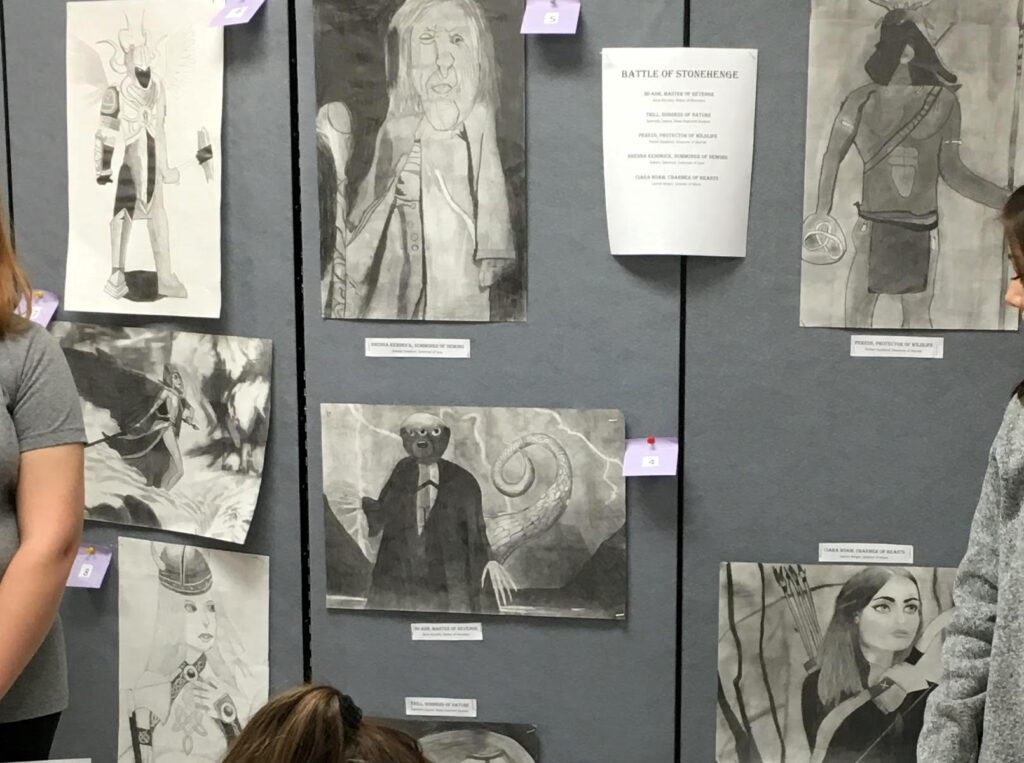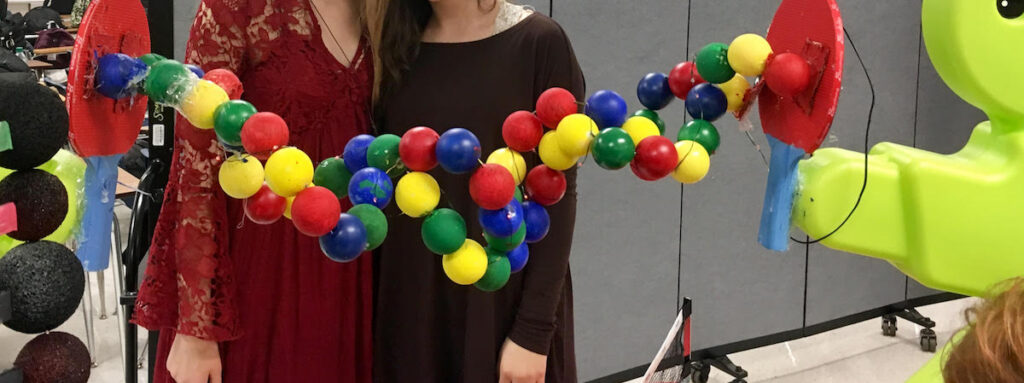STEAM is still a major buzzword in the world of education, and it should be! As art educators, our goal is to continue to show the value of the “A” in STEAM. Art provides the creative thinking link between the other subjects. And, the hands-on learning art brings to the table is the key to authentic retention. We see the power in this type of learning every day in the art room.
So what happens when we add visual art ideals to other disciplines? The results are pretty amazing!

Creating and Designing a STEAM-Based Course
Five years ago, I joined forces with a biology teacher and a language arts teacher at my school. Our goal was to combine our three disciplines into one STEAM-based class. We planned to run it during two back-to-back class periods. Students would earn three credits for the course. During their time with us, they would do projects that hit all three subject areas at once. We called it CONNECT. After pitching it to our admin and getting approval, we marketed the class to students and were up and running!
Once we had approval, we began to design our course. Our challenge was to include the standards found in all three of the courses we were going to teach: Intro to Visual Art, Biology, and Language Arts. This forced us to use our creative-thinking skills to come up with some non-traditional lessons!
3 Unit Examples
Below you can read through three unit examples we used in this course.
1. Color Wheel Zoos

Biology
Working in groups of four to six, students researched a biome for a specific group of animals.
Language Arts
Then, the students created written brochures about their biomes.
Visual Art
Finally, the students used their knowledge of the color wheel to design a visually appealing entrance to their group zoo. I pushed my students to be creative with their material, size, surface, etc.… and the results were wonderful. I had students wood burning, working super large, and using their technical skills collaboratively to design fabulous art to powerfully showcase their learning.
We also had students design invitations for a community event where they presented their work.
2. Epic Journey Through a Cell System

Biology
Students worked in groups of four to learn about the cell system, which met one of our 9th-grade county biology standards.
Language Arts
The students read The Odyssey. Then, they wrote an epic story. The catch? The characters had to creatively travel through the cell system of a human body.
Visual Arts
To make an art connection, the students drew their story characters using the grid technique. Finally, they acted out a portion of their epic journey.
3. DNA Sculptures

Biology
Working in groups of two, students chose to work with replication, transcription, translation, or a general DNA strand. The biology teacher worked through this in detail, so the students were able to take these ideas into the next two disciplines.
Language Arts
Students researched and wrote down everything they were learning in journals.
Visual Art
The most fun part of the unit was when students were challenged to design 3-D DNA sculptures. They had total freedom in materials. Watching students work collaboratively with their newfound knowledge to create evidence of their learning was nothing short of miraculous!
To wrap up the unit, we invited community members to come and see the outcome of the students’ learning. The results were incredible. Leaning about a topic, keeping findings in a journal, creating a piece of art, and presenting about it: this is the type of hands-on, STEAM learning that can take students’ learning to the next level!
Of course, these are just three examples. We went on to design more units, and so could you. The possibilities are endless! If you’d like to try something similar, here is some advice.
3 Tips for Successful STEAM-based Collaborations

1. Choose Your Team Wisely
To create a STEAM-based course, it is essential to have the right teachers on your team. I found we all had to be very flexible, which was often tricky considering we each had many years under our belts. We also had to meet more than usual to design our lessons, so you have to be willing to put in a few more hours to get this type of course off the ground.
2. Choose Your Courses Wisely
One of the big questions was how to continue this type of course offering year after year. We wondered if we could keep it going. We had to take a good look at the county standards and see where they aligned. We found chemistry and 10th-grade Language Arts just didn’t align. So the option we came up with was a humanities course where we combined 10th-grade Language Arts, Drawing and Painting, and AP World History. Flexibility is key!
3. Don’t Lose the Art, But Be Open to the Possibilities
I think this is the type of teaching and learning essential to today’s world. We watched fifty freshmen students take their learning to a new level. We received numerous messages from parents and students alike that they had never experienced schooling like this in the past. I do want to reiterate that this course was designed as a STEAM-based course, so I never gave up the art standards or all the things a visual class ultimately is. But by combining visual art with other disciplines and seeing how this type of project-based learning works, we learned this is the way in which certain children learn the best!
Each of our CONNECT units were designed to engage students at a deeper level by providing them opportunities to research and dig deep. We realized after our first year that creating this type of learning environment worked. Our kids were learning, and better yet, they were excited about learning! The hands-on, art portions of the assignments became the catalyst of their learning, and we realized STEAM-based learning really was a key to the way in which our kids need to learn in today’s world.
Are you doing any STEAM-based teaching in your current art curriculum?
Have you collaborated with any other teachers in your school to create a course that combines classes?
Magazine articles and podcasts are opinions of professional education contributors and do not necessarily represent the position of the Art of Education University (AOEU) or its academic offerings. Contributors use terms in the way they are most often talked about in the scope of their educational experiences.





